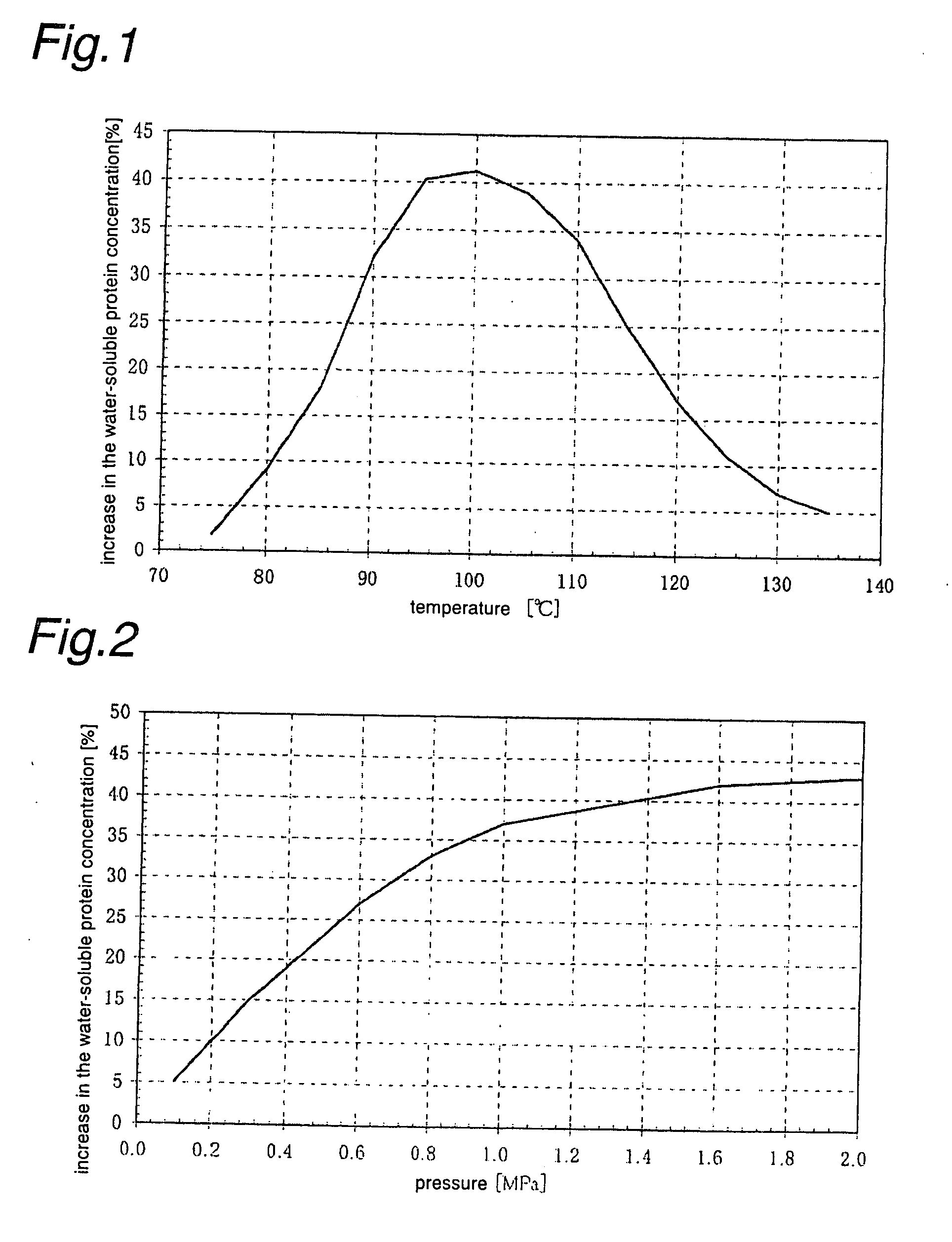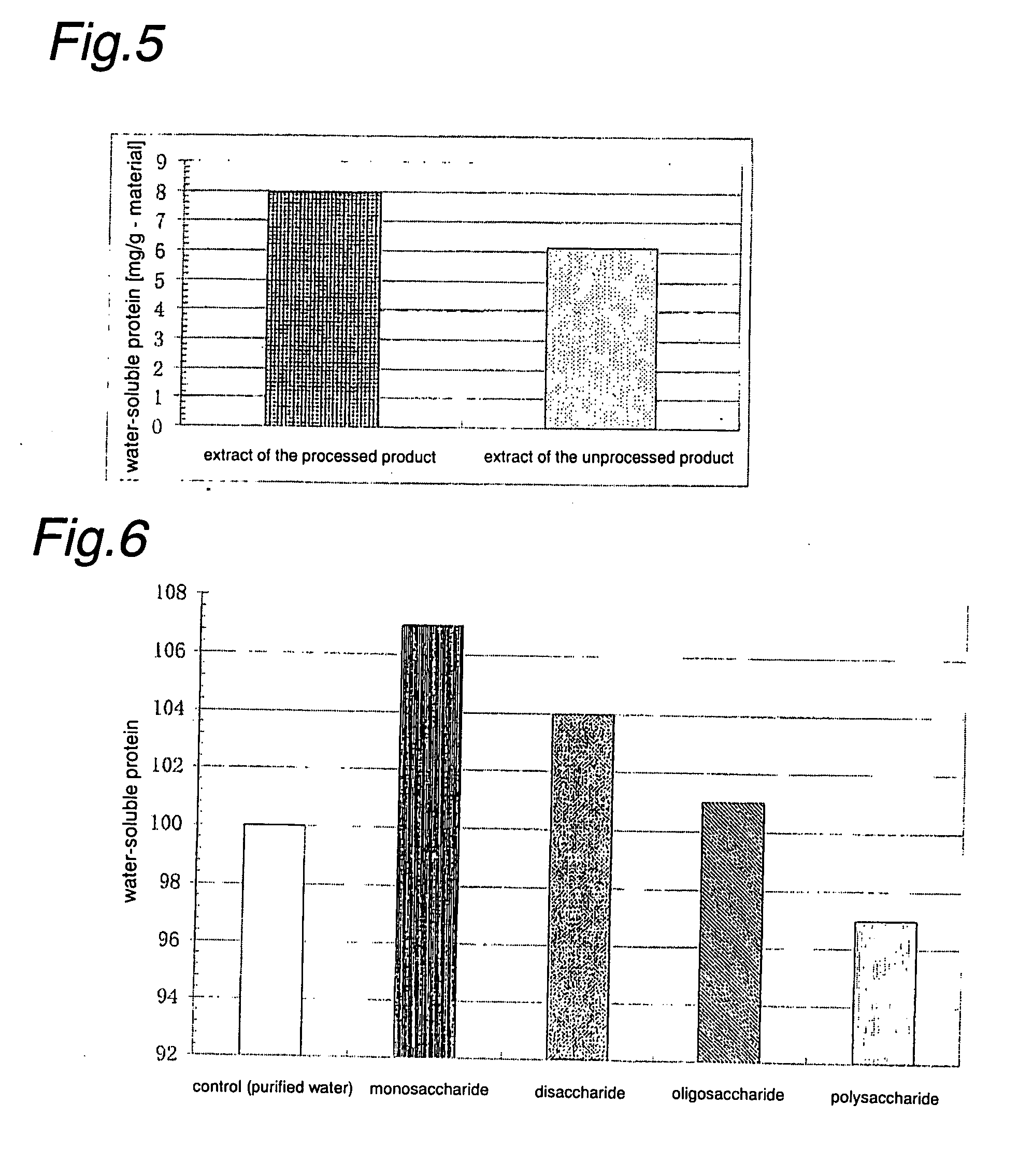Processed Tea Leaf Product Obtained By Extrusion
a technology of tea leaves and products, applied in the field of processing tea leaves, can solve the problems of affecting the flavor, affecting the taste, and reducing the amount of natural umami components that can be obtained by extrusion, and achieves the effects of no deterioration in quality, and superior umami
- Summary
- Abstract
- Description
- Claims
- Application Information
AI Technical Summary
Benefits of technology
Problems solved by technology
Method used
Image
Examples
referential example 1
[0071]The extruder processing according to the present invention was performed by using Japanese kukicha as the starting tea leaves. As the extruder, Food Twin-Screw Extruder Model TEX30FC-18.5PPW-V (manufactured by The Japan Steel Works, Co.) was used. More specifically speaking, the extruder processing was carried out by supplying ground tea leaves from a material hopper located above the cylinder for supply into the cylinder at a constant speed of 50 kg / h. On the other hand, purified water was supplied from another port into the cylinder at a constant speed of 10 kg / h. By controlling an electrical heater attached to the outside of the cylinder, the maximum temperature in the cylinder was adjusted to 160° C. By controlling the screw structure and the rotational speed, the maximum pressure in the cylinder was adjusted to 2 MPa. Immediately after starting the operation of the extruder under the conditions as described above, steam and the tea leaves vigorously blew out from the outl...
example 1
[0074]Examination was made with respect to the conditions (temperature, pressure and water-addition level) to be employed in subjecting tea leaves to an extruder processing.
(1) Processing Test 1 (Temperature Condition)
[0075]Under a constant maximum extruder processing pressure (i.e., 1.0 MPa) and at a constant water addition level (i.e., 30 parts by weight per 100 parts by weight of the starting material), tea leaves were processed at arbitrarily determined temperature levels while setting the maximum temperature to 75 to 140° C.
(2) Processing Test 2 (Pressure Condition)
[0076]At a constant maximum extruder processing temperature (i.e., 110° C.) and a constant water addition level (i.e., 30 parts by weight per 100 parts by weight of the starting material), tea leaves were processed under arbitrarily determined pressure levels while setting the maximum pressure to 0.1 to 2 MPa.
(3) Processing Test 3 (Water Addition Level Condition)
[0077]At a constant maximum extruder processing tempera...
example 2
[0082]The extruder processing according to the present invention was performed by using green tea leaves produced in Shizuoka prefecture as the starting tea leaves. More specifically speaking, the extruder processing was carried out by supplying unground tea leaves from a material hopper located above the cylinder for supply into the cylinder at a constant speed of 50 kg / h. On the other hand, purified water was supplied from another port into the cylinder at a constant speed of 10 kg / h. By controlling an electrical heater attached to the outside of the cylinder, the maximum temperature in the cylinder was adjusted to 120° C. By controlling the screw structure and the rotational speed, the maximum pressure in the cylinder was adjusted to 15 MPa. The retention time of the material in the cylinder, which was measured by using a red colorant acceptable as a food additive, was 45 sec. After continuously operating the extruder under the above-described processing conditions for several ho...
PUM
 Login to View More
Login to View More Abstract
Description
Claims
Application Information
 Login to View More
Login to View More - R&D
- Intellectual Property
- Life Sciences
- Materials
- Tech Scout
- Unparalleled Data Quality
- Higher Quality Content
- 60% Fewer Hallucinations
Browse by: Latest US Patents, China's latest patents, Technical Efficacy Thesaurus, Application Domain, Technology Topic, Popular Technical Reports.
© 2025 PatSnap. All rights reserved.Legal|Privacy policy|Modern Slavery Act Transparency Statement|Sitemap|About US| Contact US: help@patsnap.com



